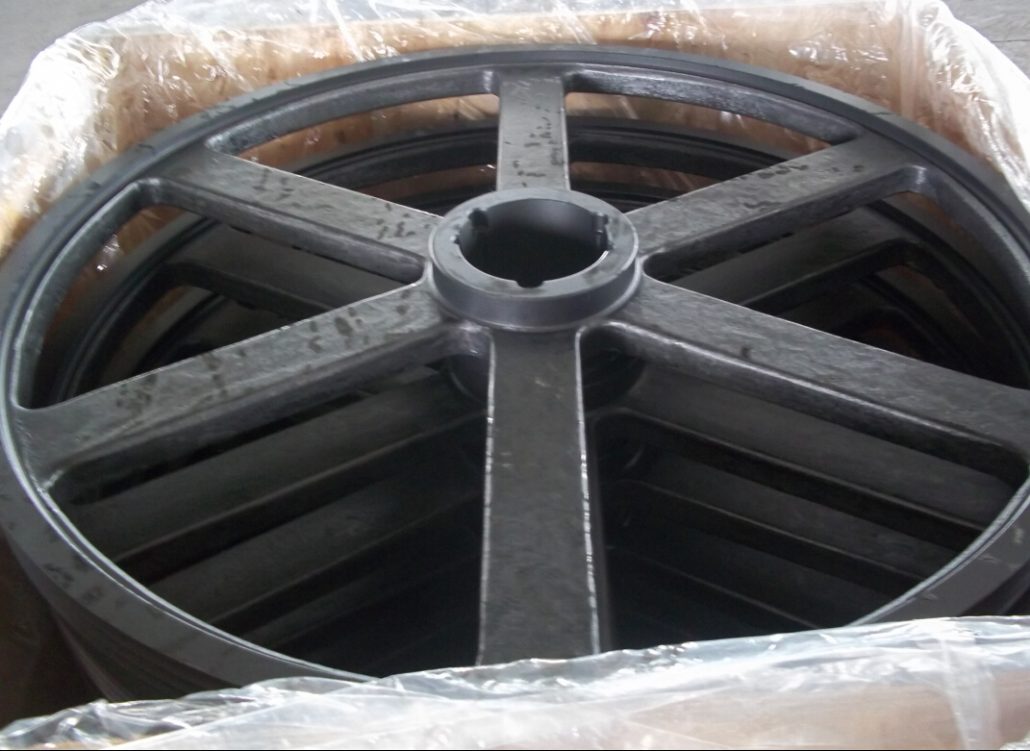A variable speed pulley and a variable speed V-belt pulley are both used for speed control in power transmission systems, but they operate on different principles.
A variable speed pulley, also known as a variable pitch pulley, is typically made up of two pulley halves that can move closer or further apart to change the effective diameter of the pulley. This allows the speed of the driven shaft to be changed by adjusting the position of the belt on the pulleys. The angle of the pulley halves can be adjusted manually or automatically to maintain a constant speed.
A variable speed V-belt pulley, on the other hand, uses a belt with a variable pitch to adjust the speed of the driven shaft. The belt is made up of a series of sections of different lengths, which can be adjusted to change the effective pitch diameter of the pulley. This allows the speed of the driven shaft to be changed without adjusting the position of the belt on the pulleys.
In general, variable speed V-belt pulleys are more compact and require less maintenance than variable speed pulleys, but they may be less precise and have a lower speed range. Variable speed pulleys, on the other hand, may have a wider speed range and offer more precise speed control, but may be larger and require more maintenance. The choice between the two depends on the specific requirements of the application.
What are the components of the pulley price ?
The price of a pulley can depend on several factors, including:
- Material: The type of material used to make the pulley can affect its price. Common materials for pulleys include aluminum, steel, cast iron, and plastic.
- Size: The size of the pulley, measured by its diameter and width, can affect the price. Larger pulleys may be more expensive due to the increased material and manufacturing costs.
- Quality: The quality of the pulley, including its precision and durability, can impact the price. Higher quality pulleys may be more expensive due to the use of more precise manufacturing techniques and better materials.
- Manufacturer: The manufacturer of the pulley can also affect the price. Some brands may be more expensive due to their reputation for quality or their use of specialized materials or manufacturing processes.
- Quantity: The quantity of pulleys being purchased can also affect the price. Bulk orders may be eligible for discounts or reduced pricing.
The price difference between a variable speed pulley and a variable speed V-belt pulley can vary depending on the specific product and manufacturer. In general, variable speed V-belt pulleys tend to be more expensive than variable speed pulleys, as they typically require the additional components of a V-belt and a tensioning system. Additionally, variable speed V-belt pulleys may offer more precise speed control and smoother operation, which can also increase their cost. It’s best to compare prices from different manufacturers and suppliers to get an accurate idea of the price difference between the two types of pulleys.
CONTINUE READING
Related Posts
In the world of industrial manufacturing, the efficiency and reliability of transmission systems are critical to the success of any […]
In industrial settings, a smooth and quiet power transmission system is crucial for productivity, safety, and worker comfort. V Belt […]
Splines play a critical role in mechanical power transmission systems, enabling rotational motion and torque transfer between mating components. These […]





